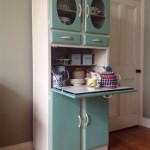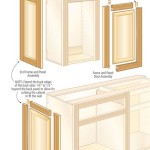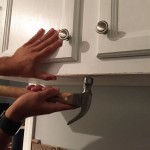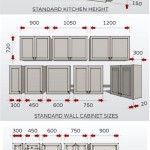Stained Glass Kitchen Cabinet Inserts: A Timeless Fusion of Art and Function
Stained glass kitchen cabinet inserts offer a unique and captivating way to enhance the aesthetic appeal of a kitchen. Beyond their decorative function, these inserts inject personality, character, and a touch of artistry into a space often dominated by practicality. This article explores various aspects of stained glass kitchen cabinet inserts, including their design considerations, material options, installation methods, and the impact they have on the overall kitchen environment.
Design Considerations for Stained Glass Kitchen Cabinets
The design of stained glass inserts should be carefully considered to complement the existing kitchen style and reflect the homeowner's personal preferences. Factors such as color palette, pattern complexity, glass texture, and the overall architectural design of the kitchen play crucial roles in creating a cohesive and visually appealing result.
Color Palette: The color selection for stained glass inserts should harmonize with the kitchen's existing color scheme. Complementary colors can create a vibrant and balanced appearance, while analogous colors offer a more subtle and unified effect. Consider the colors of the cabinets, countertops, backsplash, and flooring when choosing the colors for the stained glass. Translucent colors allow light to pass through, adding warmth and vibrancy to the room. Opaque colors, on the other hand, provide greater privacy and a bolder visual statement.
Pattern Complexity: The complexity of the stained glass pattern should be proportionate to the size of the cabinet door and the overall style of the kitchen. Simple geometric patterns often suit modern and minimalist kitchens, while more intricate designs, such as floral motifs or pictorial scenes, can be incorporated into traditional or eclectic kitchens. The level of detail in the pattern should also be considered in relation to the other design elements in the kitchen. A highly detailed stained glass insert may compete with other prominent features, while a simpler design can provide a subtle accent.
Glass Texture: The texture of the glass used in stained glass inserts can significantly affect the way light is transmitted and reflected. Textured glass, such as hammered, ripple, or seedy glass, can create a diffused and softened light effect, adding depth and visual interest to the design. Smooth, clear glass offers a more transparent and unobstructed view of the contents of the cabinet. The choice of glass texture depends on the desired level of privacy and the overall aesthetic effect.
Architectural Style: The design of the stained glass inserts should be consistent with the architectural style of the kitchen. For example, a Victorian-style kitchen may benefit from ornate patterns and rich colors, while a contemporary kitchen may be better suited to simpler geometric designs and muted tones. Incorporating architectural elements from the rest of the house into the stained glass design can create a sense of continuity and harmony.
Material Options: Glass and Framing
The materials used in the construction of stained glass kitchen cabinet inserts are crucial to their durability, longevity, and aesthetic appeal. The quality of the glass and the framing materials directly impact the overall appearance and performance of the inserts.
Glass Types: A variety of glass types are available for stained glass projects, each with its own unique characteristics. These include:
- Cathedral Glass: This is a translucent glass with a smooth or textured surface, available in a wide range of colors. It is often used for backgrounds and larger areas of color.
- Opalescent Glass: This glass has a milky, semi-opaque appearance and is available in a variety of colors and patterns. It is often used for creating depth and dimension.
- Streaky Glass: This glass has streaks of different colors running through it, creating a unique and dynamic effect.
- Antique Glass: This is a hand-blown glass with slight imperfections and variations in thickness, adding character and authenticity to the design.
- Beveled Glass: This glass has angled edges that reflect light, creating a prism-like effect. Bevels can be used to add elegance and sophistication to the design.
Framing Materials: The framing material used to hold the stained glass panels together is typically lead came, copper foil, or zinc. Each material has its own advantages and disadvantages.
- Lead Came: This is a traditional material for stained glass construction, consisting of strips of lead with a channel that holds the glass pieces in place. Lead came is strong, durable, and can be easily shaped to accommodate complex designs. However, it is also relatively heavy and can darken over time.
- Copper Foil: This is a thin copper tape that is wrapped around the edges of the glass pieces and then soldered together. Copper foil is lighter than lead came and allows for finer details and more intricate designs. However, it is less durable than lead came and requires careful soldering to prevent leaks.
- Zinc: This is a strong and durable metal that is often used for framing larger stained glass panels. Zinc is more rigid than lead came and copper foil, providing greater support for the glass. However, it is also more difficult to shape and work with.
The choice of framing material depends on the size and complexity of the stained glass design, as well as the desired aesthetic effect. Lead came offers a traditional and durable look, while copper foil allows for greater detail and flexibility. Zinc is best suited for larger panels that require extra support.
Installation Methods and Practical Considerations
The installation of stained glass kitchen cabinet inserts requires careful planning and execution to ensure a secure and aesthetically pleasing result. The installation method depends on the type of cabinet door and the size of the stained glass panel. Practical considerations such as safety, maintenance, and lighting should also be taken into account.
Installation Techniques: There are several methods for installing stained glass inserts into kitchen cabinet doors:
- Direct Replacement: The existing glass panel in the cabinet door is removed and replaced with the stained glass panel. This is the simplest and most common method, suitable for cabinet doors with removable glass panels.
- Overlay: The stained glass panel is applied to the surface of the existing glass panel. This method is suitable for cabinet doors with non-removable glass panels or for adding a decorative layer to existing glass.
- Custom Cabinet Doors: New cabinet doors are constructed with integrated stained glass panels. This method allows for greater design flexibility and can incorporate the stained glass panel seamlessly into the door.
Safety Considerations: Safety is a paramount concern when working with glass. Safety glasses and gloves should always be worn to protect against cuts and injuries. When handling lead came, avoid inhaling lead dust and wash hands thoroughly after handling. Tempered glass or laminated glass should be considered for added safety, especially in areas where there is a risk of impact or breakage.
Maintenance and Cleaning: Stained glass kitchen cabinet inserts require regular cleaning to maintain their appearance. Use a soft cloth and mild soap and water to clean the glass. Avoid using abrasive cleaners or harsh chemicals, which can damage the glass and the framing material. Regular inspection and maintenance can prevent minor problems from becoming major repairs.
Lighting Considerations: The lighting in the kitchen can significantly affect the appearance of stained glass inserts. Natural light can create vibrant and dynamic effects, while artificial light can highlight specific colors and patterns. Consider the placement of light fixtures in relation to the stained glass panels to maximize their visual impact. Backlighting the stained glass can create a dramatic and eye-catching effect.
Stained glass kitchen cabinet inserts are more than just decorative elements; they are artistic expressions that can transform the ambiance of a kitchen. By carefully considering the design, materials, and installation methods, homeowners can create a unique and captivating space that reflects their personal style and adds lasting value to their home. The integration of stained glass into kitchen cabinetry provides an enduring testament to the harmonious blending of art and function, resulting in a kitchen that is both beautiful and practical.

Stained Glass Kitchen Cabinet Inserts Ci 2 Elegant Norway

Kitchen Cabinet Remodel 1 Economical Solution For Upgrade

Stained Glass Cabinet Inserts Ci 71 Kandinsky Inspired

Glass Inset Design Idea Http Brooksbevelededges Com Uploads 3 4 2 5 34252717 3265987 Orig J Leaded Cabinets Cabinet Doors Kitchen

Kitchen Cabinet Remodel 1 Economical Solution For Upgrade

Cabinet Door Designs In Stained Glass Kitchen Doors Cabinets

Stained Glass Cabinet Inserts Hawkings Residence Traditional Kitchen Orange County By Cabinetglass Com Houzz Ie

How To Install Stained Glass In A Cabinet Door Gomm

Kitchen Cabinet Doors Decorative Glass Cabinets Middlefield Inc

Stained Glass Cabinet Inserts Ci 62 Exquisite Diamond Norway
Related Posts








